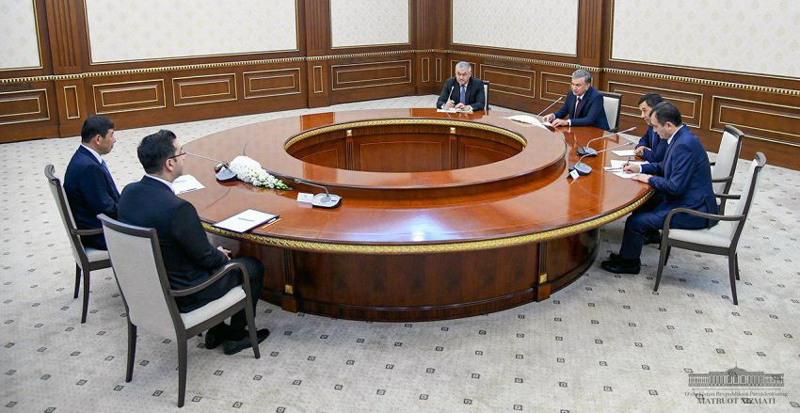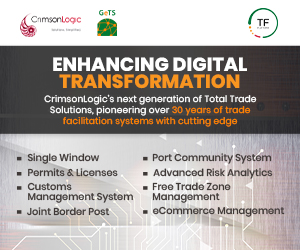An overview of Uzbekistan Customs’ reform journey
25 October 2021
By Ulugbek Tadjiev and Mirshod Kurbonov, International Cooperation Department, State Customs Committee of the Republic of UzbekistanIn December 2020, Uzbekistan acceded to the International Convention on the Simplification and Harmonization of Customs Procedures (Revised Kyoto Convention). This article describes the impact of the Convention on the Customs reform process and introduces the work done in recent months towards the implementation of international standards and modern working methods.
Uzbekistan is a landlocked country in Central Asia. Although it gained its independence from the Union of Soviet Socialist Republics (USSR) in August 1991, the country only broke with the state-led model and economic isolation in 2016, following the election of President Shavkat Mirziyoyev. Since then, it has embarked upon an ambitious programme of economic modernization and institutional reform.
|
At the Customs level, a first move in the direction of change was to adopt a new Customs code aligned, to the greatest possible extent, with international standards. The code entered into force on 20 April 2016. This was only the beginning. Uzbek Customs intended for the country to accede to the WCO Revised Kyoto Convention, and the new code had been only partially aligned with the Convention’s provisions and principles. The meeting of the WCO Secretary General, Kunio Mikuriya, with President Mirziyoyev in November 2019 gave a new impulse to this endeavour. A little more than a year later, the Instrument of Accession was deposited, and the RKC entered into force in Uzbekistan on 16 May 2021.
RKC accession process
Overall, the RKC, which is a blueprint for modern Customs procedures, is aimed at developing predictable and transparent Customs procedures based on the use of information technologies, risk management, a coordinated approach to controls along with other governmental agencies, and partnerships with trade, among other things. The RKC consists of three parts: the text, a General Annex with 10 Chapters, and 10 Specific Annexes. The entire General Annex is binding on Contracting Parties, and no reservations are possible with respect to its implementation. Specific Annexes of the RKC consist of Standards and Recommended Practices regarding other aspects of Customs procedures. Contracting Parties may accept one or more of the Specific Annexes as well as submit reservations to Recommended Practices to the WCO.
In 2015, while drafting the new Customs code, Uzbek Customs had conducted a gap analysis with the help of WCO Secretariat experts to assess the level of compliance of the national legislation and regulatory frameworks with the Convention’s standards. All RKC provisions were compared to the national legislation.
The analysis concluded that 73 standards (63%) of the General Annex and 200 standards (83%) of the Specific Annexes were already implemented in Uzbekistan. The drafted code covered all Customs procedures except for:
– the “Processing of goods for home use” (Chapter 4, Specific Annex F);
– the provision on de minimis values;
– the provision on Authorized Traders;
– the Customs procedures/controls related to Free Zones.
A key challenge was therefore to establish, in the coming years, the legal frameworks enabling the introduction of these procedures.
Moreover, changes were made to implement RKC provisions on expenses chargeable by Customs (“When the Customs cannot supply information free of charge, any charge shall be limited to the approximate cost of the services rendered”) and on the “operation of joint Customs controls at common border crossings”.
Uzbek Customs had considered the possibility of acceding to the Convention on several occasions, but the combination of legal, political and technical challenges had halted this process. When the President expressed support for substantial Customs reforms in 2016, the Administration brought the issue to the table once again. The rationale was not only to push for reforms but also to achieve national and international recognition of the efforts made towards more efficient, transparent and predictable Customs procedures, regulations and practices in compliance with international standards.

In December 2020, the accession process was complete, and Uzbek Customs participated in the 23rd Meeting of the Revised Kyoto Convention Management Committee. Uzbekistan has accepted all Specific Annexes of the Convention (standards and recommended practices), except for Chapter 3 of Specific Annex E (Carriage of goods coastwise), as the procedure described in the Annex does not apply to landlocked countries.
Ongoing work
As foreseen by the Convention, Uzbek Customs must implement all its provisions by December 2023. The WCO considers that implementing the RKC supports countries’ efforts towards the efficient and harmonious implementation of the World Trade Organization’s Trade Facilitation Agreement (TFA) that entered into force on 22 February 2017. Uzbekistan resumed WTO membership negotiations in July 2020, and accession to the RKC is also part of its commitment to bring its trade regime into conformity with WTO rules.
Another diagnostic mission was undertaken in February 2020 by the WCO Secretariat as part of its Mercator Programme, which was designed to assist governments in implementing the Customs trade facilitation measures outlined in the TFA, while promoting adherence to WCO standards such as those of the RKC.
The experts’ recommendations include:
- developing a multi-year Customs Strategic Plan streamlining all the different initiatives and governmental instructions.
- devising and implementing a communications strategy to keep staff and external stakeholders better informed about the changes being adopted.
- adopting a competency-based approach to human resource management and strengthening the existing Capacity Building Plan.
- implementing the WCO Time Release Study (TRS) methodology.
- implementing the procedure to enable the electronic lodgement of the Customs declaration in advance and providing an opportunity to process that information in order to determine whether the goods need to be inspected or released upon arrival.
- developing and implementing a formal Risk Management Strategy to: (a) ensure that risk management is carried for all operations, at all checkpoints, and leave a small amount for random inspections to allow the automated system to continue learning; (b) avoid multiple inspections for the same operations and eliminate the possibility for local officials to alter the outcome of the selectivity system; (c) allow green channel and blue channel consignments to be released at border checkpoints; (d) monitor adequately the effectiveness of risk management.
- establishing a Post-Clearance Audit (PCA) Unit with well-defined processes and standard operational procedures that allow the Unit to develop investigations and programme audits that are based on risk management and are focused not on specific operations but on operators.
- establishing a working group with border agencies to develop inter-agency cooperation and communication.
- enabling traders to submit documentation and/or data requirements for importation, exportation or transit of goods through a single entry point.
Digital Customs
It is worth nothing that the digitization of Customs processes was declared as a top priority. The decision was a direct consequence of the COVID-19 pandemic crisis. Uzbek Customs wants to develop new ITC solutions to eliminate paper-based processes and implement risk management and data analytics.
In this domain, the following initiatives are under way:
- digitizing trade-related documents to facilitate electronic data processing (the State Quarantine Agency has started receiving documents in electronic format and discussions are ongoing with the agencies respectively responsible for Veterinary Controls and for Health and Epidemiological Surveillance).
- integrating the Customs Declaration System with the IT systems of other border regulatory agencies;
- creating a system enabling the real-time monitoring of goods from their entry into the Customs territory until their release for free circulation, including in liaison with the railway authority;
- enabling the use of the Customs Declaration System through a mobile application;
- developing risk indicators and making use of automated data analysis tools to enable automated Customs clearance procedures and reduce the discretionary practices of Customs officers;
- joining the eTIR international system which replaces the paper TIR Carnet.
More information
u.tadjiev@customs.uz
m.qurbonov@customs.uz

